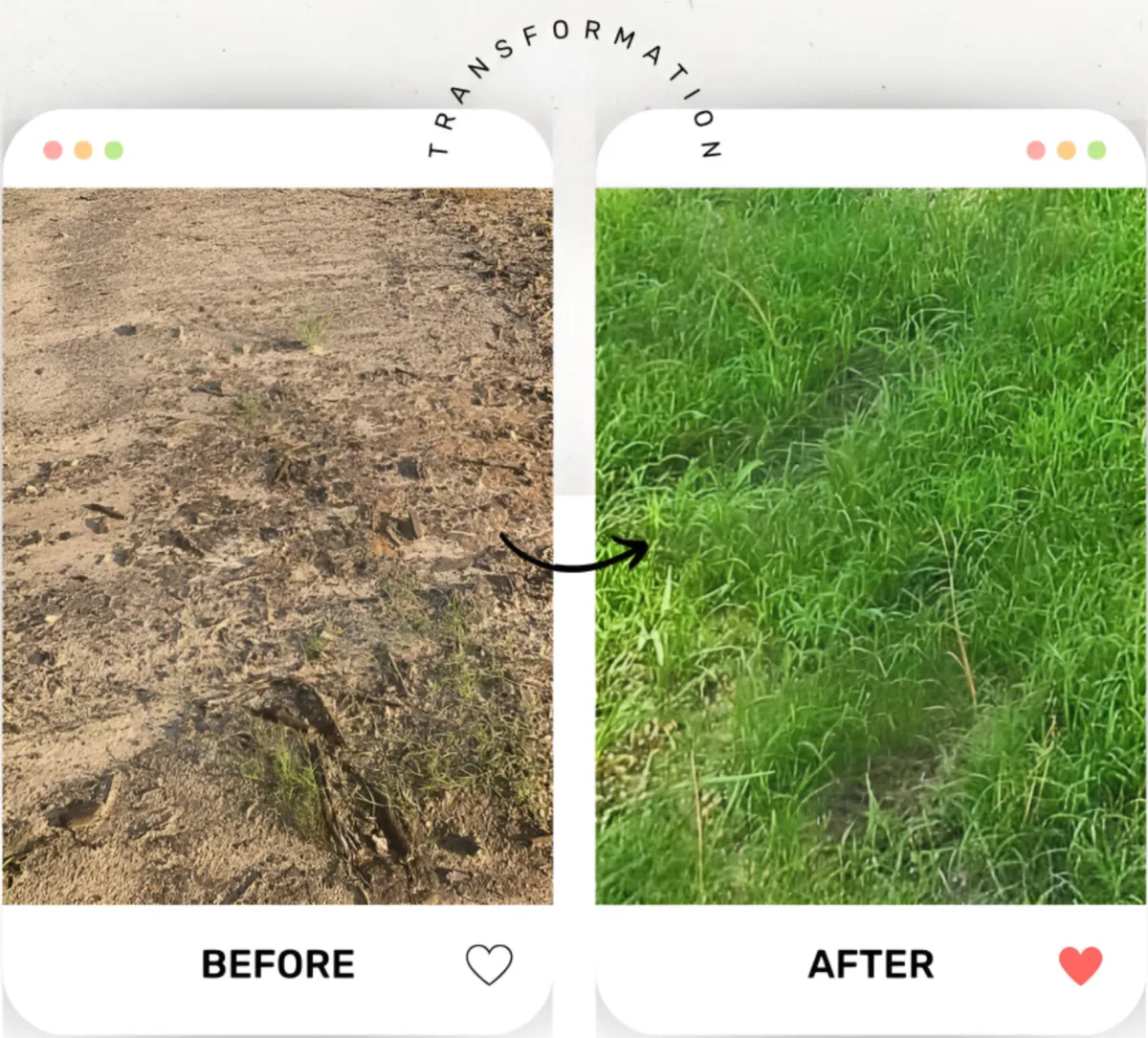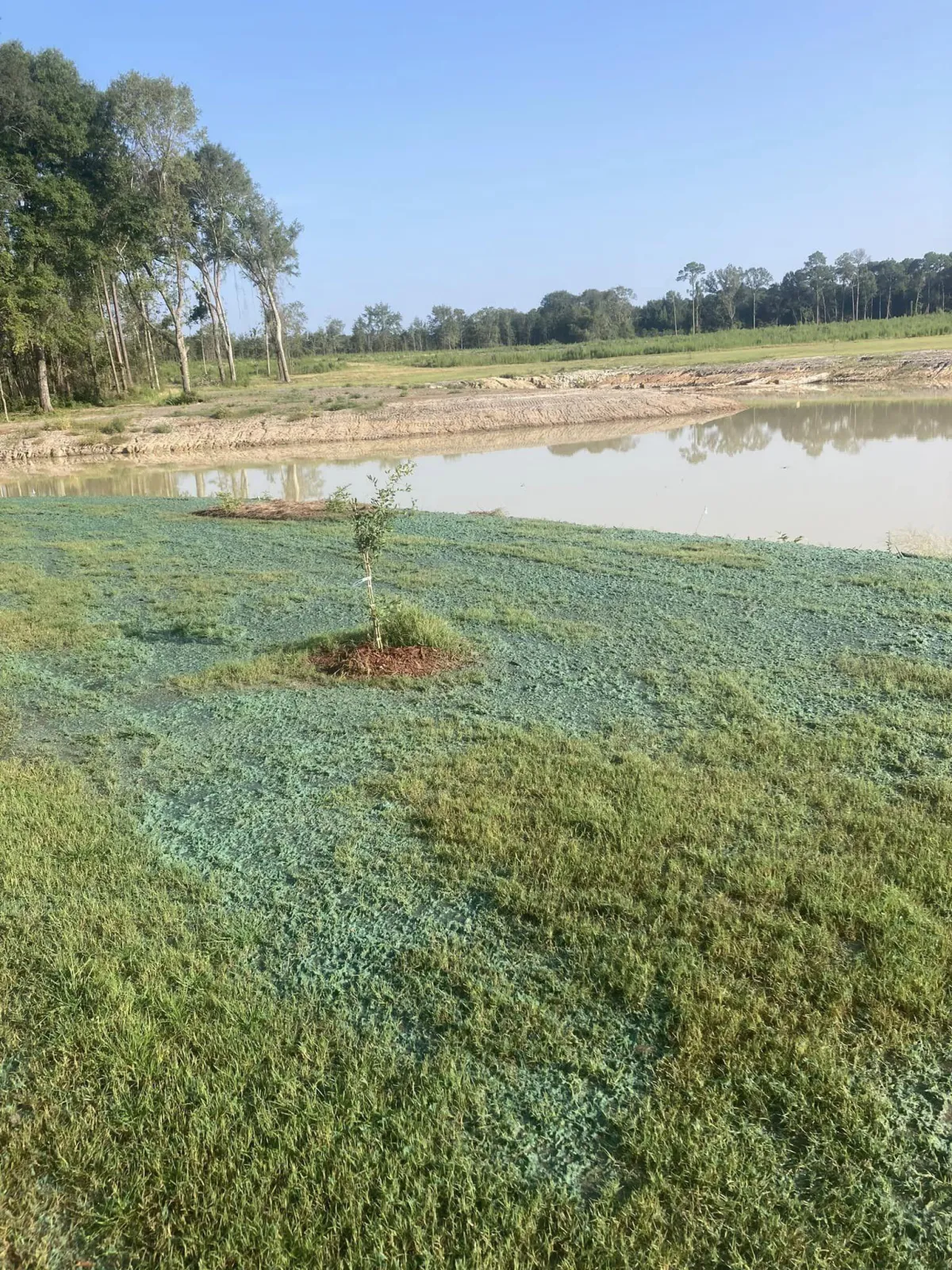Our Offerings
Comprehensive hydroseeding solutions, from erosion control and soil stabilization to revegetation and landscape restoration.

hydroseeding
Hydroseeding is a highly effective method for establishing lush, healthy vegetation on a variety of terrain, utilizing a slurry of seed, mulch, fertilizer, and water to promote rapid growth and erosion control. By harnessing the power of hydroseeding, landscapes can be restored and green spaces revitalized with efficiency and eco-friendliness.


treatment comparison
Before hydroseeding, lawns may exhibit sparse grass coverage, patchy areas, and susceptibility to erosion. After hydroseeding, these lawns flourish with dense, healthy grass growth, boasting improved resilience against erosion and a vibrant green appearance that enhances curb appeal and environmental health.

erosion control
Hydroseeding plays a crucial role in erosion control by creating a protective layer of mulch and vegetation that stabilizes the soil, preventing it from being washed away by rain or wind. The mixture of seeds, water, fertilizer, and mulch helps establish vegetation quickly, reducing the risk of erosion on slopes, construction sites, and other vulnerable areas.


site preparation
Site preparation for hydroseeding involves clearing the area of debris and weeds, grading the soil to ensure proper drainage and a level surface, and possibly applying soil amendments to enhance fertility. It's essential to create an optimal environment for seed germination and growth, promoting successful establishment of the desired vegetation through the hydroseeding process.
Frequently Asked Questions
What is hydroseeding?
Hydroseeding is a method of planting grass or vegetation by spraying a mixture of seeds, water, fertilizer, and mulch onto the soil surface, offering fast germination and erosion control for large areas like highways or residential lawns.
How much does hydroseeding cost?
The cost of hydroseeding typically ranges from $0.10 to $0.25 per square foot, depending on factors such as the size of the area, the type of seed and mulch used, and any additional services required.
Is hydroseeding better than sod?
Hydroseeding is often more cost-effective and suitable for large areas, providing faster germination and better erosion control, while sod offers instant green coverage but can be more expensive and labor-intensive to install, particularly for extensive areas.
When is the best time of year to have my lawn treated?
The best time to have a lawn treated with hydroseeding is typically in the late spring or early fall. However we treat all throughout the summer season with great results.
What type of grass seed is used in hydroseeding?
Hydroseeding can utilize a variety of grass seed types depending on the region and desired lawn characteristics, commonly including species like Bermuda, Centipede, and Zoysia, or a mixture of these for a resilient and attractive lawn.
How often should I water my treated lawn?
After hydroseeding, it's generally recommended to water the yard lightly multiple times a day to keep the soil consistently moist but not waterlogged, typically for the first two to three weeks until the seeds germinate. Once the grass starts to establish, gradually reduce watering frequency while ensuring the soil remains consistently moist until the lawn is fully established.

